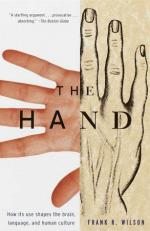
|
Permanent immaturity
This theory underlies the author's thesis that people are born resourceful. Over time and experience they become skillful and thoughtful because their brain remains in a state of permanent curiosity, learning, and growth.
Australopithecine
The name of the first southern apes that walk upright in Africa.
Anthropological reference date
The term used by Wilson to denote human development periods.
Pliocene epoch
A term that denotes an anthropological period when hominids appear with a recognizable four-finger hand and thumb, exemplified by Lucy.
Theory of brain growth, language and intelligence
A theory devised by Robin Dunbar to correlate neocortex or brain size with a stable group or tribe size.
Theory of cultural and cognitive evolution
A theory devised by Merlin Donald that claims the human brain developed in a three-stage process.
Theory of intelligence
Plotkin's theory that claims that knowledge refers to a state in relation to the...
(read more Object Descriptions)
|
This section contains 440 words (approx. 2 pages at 300 words per page) |

|




